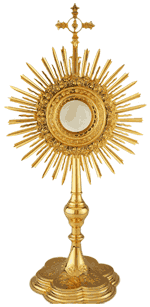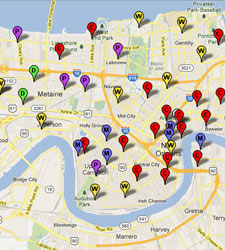September 8, 2009
 The earliest document commemorating the feast of the birth of the Blessed Virgin Mary is a hymn from the middle of the sixth century taken from the apocryphal Gospel of St. James. The feast may have originated somewhere in Syria or Palestine in the beginning of the sixth century, when after the Council of Ephesus, when Mary was declared to be the “Mother of God” her pious cult was greatly intensified, especially in Syria. Records of several 8th century sermons by St. Andrew of Crete show the continuation of the feast, but there is not much evidence to show why the September 8th was chosen for its date. It’s possible that the date was chosen because the Eastern Church begins its Church year with September. What is known is that the September 8 date helped determine the date for the Feast of the Immaculate Conception on December 8.
The earliest document commemorating the feast of the birth of the Blessed Virgin Mary is a hymn from the middle of the sixth century taken from the apocryphal Gospel of St. James. The feast may have originated somewhere in Syria or Palestine in the beginning of the sixth century, when after the Council of Ephesus, when Mary was declared to be the “Mother of God” her pious cult was greatly intensified, especially in Syria. Records of several 8th century sermons by St. Andrew of Crete show the continuation of the feast, but there is not much evidence to show why the September 8th was chosen for its date. It’s possible that the date was chosen because the Eastern Church begins its Church year with September. What is known is that the September 8 date helped determine the date for the Feast of the Immaculate Conception on December 8.
Although Sacred Scripture does not give an account of Mary’s birth. However, the apocryphal Gospel of St. James fills in the gap. While not a canonical Gospel, it does reflect the development of Christian piety. According to this account, Anna and Joachim are infertile but prayed for a child. In their prayers, they receive the promise of a child that will advance God’s plan of salvation for the world. Such a story (like many contained in the Bible) stresses the special presence of God in Mary’s life from the beginning.
St. Augustine connects Mary’s birth with Jesus’ saving work. He tells the earth to rejoice and shine forth in the light of her birth. “She is the flower of the field from whom bloomed the precious lily of the valley. Through her birth the nature inherited from our first parents is changed.” The opening prayer at Mass speaks of the birth of Mary’s Son as the dawn of our salvation and asks for an increase of peace.




